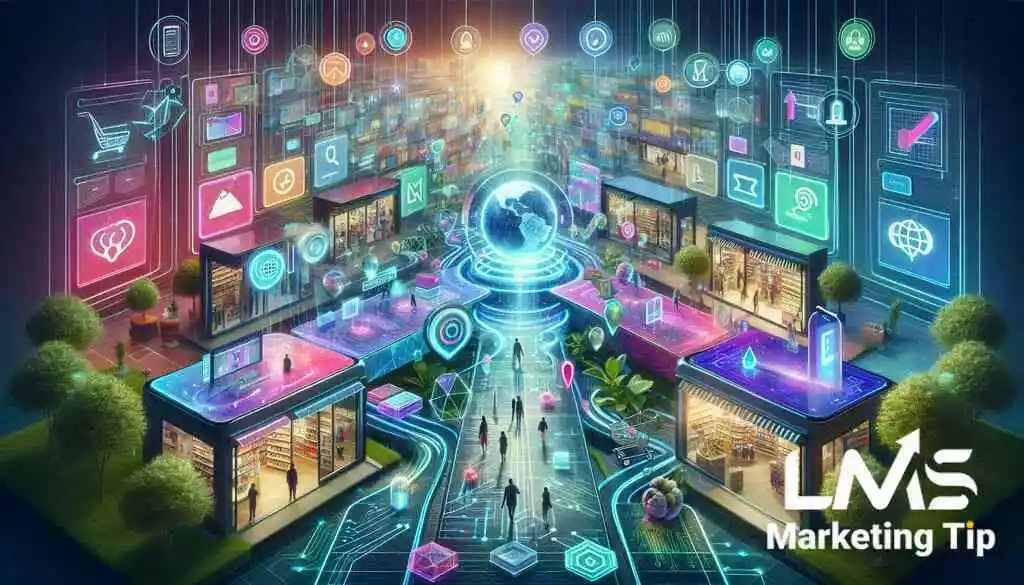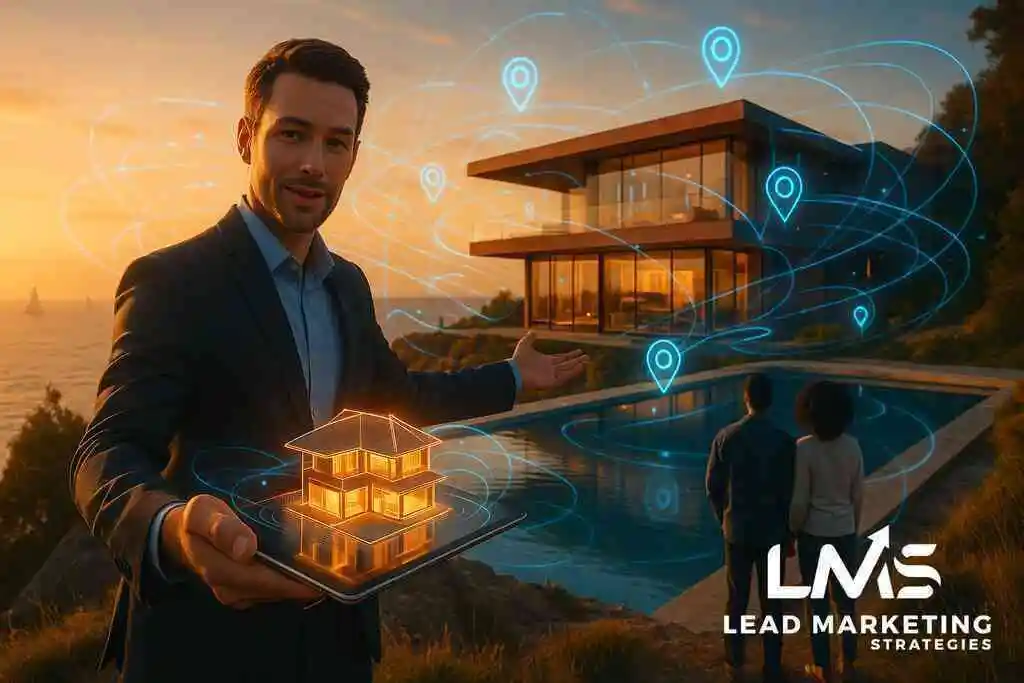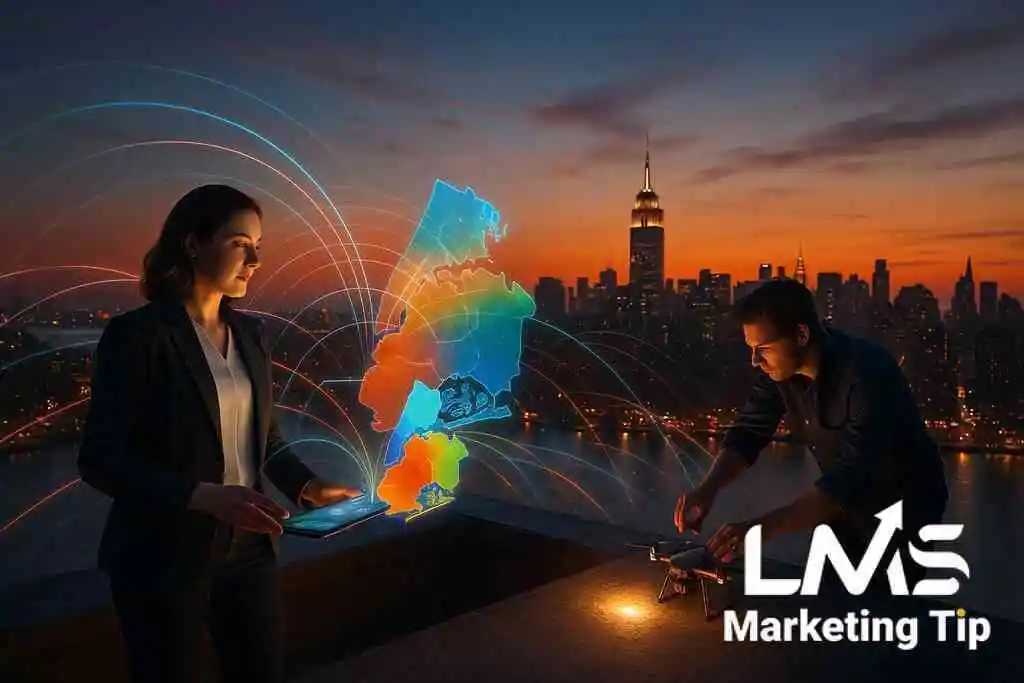
Introduction to the Future of eCommerce Marketing
The evolution of eCommerce
The journey of eCommerce from its inception to its current state is a testament to the rapid advancements in technology and changing consumer behavior. Over the years, eCommerce has evolved from simple online transactions to complex systems enabling global commerce. Advancements in internet connectivity, mobile technology, and the development of secure online payment methods have spurred this evolution. As eCommerce platforms became more user-friendly and accessible, businesses across a myriad of industries recognized the potential to reach a wider audience, thereby accelerating the growth of online shopping. This shift has not only changed how businesses operate but has also dramatically altered consumer expectations.
Why understanding future trends is crucial for online businesses
For online businesses to thrive in a constantly evolving digital landscape, staying ahead of emerging trends is not just beneficial- it’s essential. The future of e-commerce marketing hinges on understanding and adapting to these trends early. As consumer preferences shift towards more personalized, engaging, and seamless shopping experiences, businesses must employ innovative strategies to meet these demands. This includes leveraging data analytics, embracing new technologies, and understanding the dynamics of online consumer behavior. By staying informed about future trends, online businesses can make strategic decisions, tailor their marketing efforts more effectively, and ultimately secure a competitive edge in the bustling digital marketplace.
The role of innovative technologies in shaping eCommerce
Innovative technologies are at the forefront of reshaping the eCommerce landscape. Artificial intelligence, machine learning, augmented reality (AR), virtual reality (VR), and blockchain are just a few examples of technologies that are driving significant changes in how online businesses operate and interact with their customers. Artificial intelligence in eCommerce is revolutionizing customer service through chatbots and personalized shopping experiences, while AR and VR offer immersive ways for customers to engage with products. Furthermore, blockchain technology promises to enhance eCommerce security, providing a more transparent and secure environment for online transactions. These technological advancements are not only improving the customer experience. Still, they are also providing businesses with powerful tools for marketing, analytics, and customer engagement, paving the way for a future where eCommerce is more integrated, intuitive, and secure.
The Rise of Personalization in eCommerce
Personalization strategies for boosting sales
In the ever-evolving landscape of e-commerce marketing, personalization has emerged as a critical driver for boosting sales and enhancing customer engagement. By tailoring the shopping experience to individual preferences and behaviors, businesses can significantly increase the relevance and appeal of their offerings. Strategies such as personalized product recommendations, customized email marketing campaigns, and targeted discounts have proven highly effective in encouraging repeat purchases and building brand loyalty. Integrating these personalization techniques into an eCommerce marketing strategy is not just about utilizing technology; it’s about creating a more human shopping experience that resonates with the needs and desires of the customer.
Utilizing data analytics for personalized marketing
Data analytics play a pivotal role in crafting personalized marketing campaigns. By analyzing customer data, businesses gain insights into shopping patterns, preferences, and behaviors, enabling them to predict future purchasing decisions and tailor their marketing efforts accordingly. Tools and platforms that leverage machine learning and artificial intelligence can automate the analysis of vast datasets, identifying trends and opportunities for personalized interactions. Effective strategies hinge on the ethical and judicious use of data, ensuring that personalization efforts enhance the customer experience without compromising privacy or trust. By harnessing the power of data analytics, eCommerce marketing strategies become more targeted, relevant, and practical, fostering a deeper connection between the brand and its customers.
Examples from real businesses implementing personalization
Many forward-thinking businesses have successfully implemented personalization strategies, setting new standards for customer engagement in the eCommerce sphere. For instance, online retailers like Amazon and Netflix use advanced recommendation engines to suggest products and content based on previous purchases and viewing habits. Fashion brands such as Stitch Fix and Warby Parker offer personalized styling services and virtual try-ons to enhance the shopping experience. These examples underscore the tangible benefits of personalization – increased customer satisfaction, higher conversion rates, and strengthened brand loyalty. The success stories of these businesses illustrate the transformative potential of personalization in eCommerce, offering valuable lessons for companies aiming to adapt and thrive in the digital marketplace.
Leveraging Artificial Intelligence and Machine Intelligence
The infusion of artificial intelligence (AI) and machine learning (ML) into eCommerce marketing strategies marks a revolutionary shift in how businesses understand and engage with their audiences. These innovative technologies are not just futuristic concepts but fundamental, impactful tools that are reshaping the competitive landscape of online retail.
AI-powered customer insights
The application of AI in deriving customer insights offers a profound advantage for eCommerce businesses looking to deepen their understanding of target audiences. AI algorithms can sift through vast amounts of data to uncover patterns and preferences that might not be evident through traditional analysis. By leveraging digital marketing trends in Commack 2024, businesses can anticipate shifts in consumer behavior, enabling them to be proactive rather than reactive in their marketing strategies. This capability allows for the optimization of marketing efforts, ensuring that content, products, and advertisements are more likely to resonate with the intended audience, thereby increasing engagement and conversion rates.
Machine learning for improved recommendation engines
Machine learning, a subset of AI, plays a pivotal role in enhancing the personalization aspect of eCommerce through advanced recommendation engines. These systems analyze past behavior to suggest products that consumers are more likely to purchase, creating a more personalized shopping experience. Effective web design on Long Island, when integrated with machine learning, can transform a simple online store into a dynamic shopping environment that adapts to user preferences in real time. This responsiveness not only improves the user experience but also significantly boosts sales by presenting customers with items they didn’t even know they wanted.
Chatbots for enhanced customer service
Chatbots, powered by AI and ML, are redefining customer service within the eCommerce domain. By providing immediate responses to customer inquiries, chatbots improve engagement and free up human customer service representatives to handle more complex issues. These intelligent assistants can guide users through the purchasing process, provide personalized recommendations based on previous purchasing history, and even handle after-sales support. The seamless integration of chatbots into eCommerce platforms ensures that customers receive fast, efficient service at any time of the day, thereby enhancing overall satisfaction and loyalty.
In conclusion, the leveraging of artificial intelligence and machine learning within eCommerce marketing not only brings about more efficient operations but also provides a richer, more personalized experience for customers. As these technologies continue to evolve, their impact on e-commerce marketing strategies will undoubtedly grow, offering even more excellent opportunities for businesses to connect with their audiences in meaningful ways.
Adopting New Realities: AR and VR in Shopping Experiences
Augmented Reality for virtual try-on
Augmented Reality (AR) has transcended the boundaries of gaming and entertainment, carving a niche for itself in the e-commerce sector. It notably revolutionized the way customers interact with products before making a purchase. Virtual try-ons powered by AR technology allow users to visualize clothing, accessories, or even makeup on themselves through their mobile devices or computers. This interactive experience not only enhances customer engagement but also significantly reduces the likelihood of product returns. Retail giants like IKEA and Sephora have led the charge, offering AR apps that showcase how products will look in real-world environments or on the user themselves, merging digital convenience with tangible reality. The importance of user interface design in eCommerce is pivotal in these applications, as a seamless and intuitive UI is essential for a successful AR experience.
Virtual Reality showrooms and their impact on consumer behavior
Virtual Reality (VR) takes the immersive experience a step further by placing the consumer inside a digitally constructed environment. VR showrooms are a glaring example of how businesses can simulate the in-store experience from the comfort of the customer’s home. Automotive industry leaders, such as Audi, have deployed VR showrooms where customers can explore different car models, customize features, and experience the feel of the car interior in stunning detail without ever stepping into a physical dealership. This unparalleled immersive experience not only boosts consumer engagement but can also dramatically impact their purchasing decisions. It illustrates the potential of VR to not only complement existing online shopping platforms but to potentially redefine them, making the shopping experience more interactive, personalized, and memorable.
Case studies of AR/VR in action
The implementation of AR and VR in eCommerce has not only been theoretical but has seen practical and successful applications across various industries. For instance, Lowe’s, a home improvement company, introduced an AR app that enables customers to measure spaces and visualize how products would look in their homes. Another example is Warby Parker, which created a virtual try-on service for glasses, allowing customers to see how different frames fit their faces from multiple angles. These case studies highlight how AR and VR technologies are being effectively utilized to bridge the gap between online shopping and the physical product experience, leading to enhanced customer satisfaction, reduced return rates, and increased sales. By leveraging these technologies, businesses can create a competitive edge in the crowded digital marketplace, paving the way for a future where virtual shopping experiences are as commonplace and valued as visiting a physical store.
Optimizing for Mobile and Voice Search
The imperative of mobile-friendly websites
In today’s fast-paced digital world, optimizing websites for mobile has become more than just a trend-it’s a necessity. With the majority of internet users accessing the web via mobile devices, businesses cannot afford to overlook the importance of mobile-friendly designs. A well-optimized mobile website not only improves user experience but significantly enhances a site’s visibility on search engines. Google’s mobile-first indexing underscores this shift, prioritizing mobile-optimized sites in its rankings. Furthermore, optimizing mobile websites plays a crucial role in meeting consumer expectations for quick, accessible, and efficient online shopping experiences. As mobile commerce continues to grow, ensuring your website is responsive and user-friendly on smartphones and tablets is essential for driving traffic, engaging prospective customers, and boosting conversions.
Voice search optimization strategies
Voice search optimization is rapidly becoming a cornerstone of effective SEO strategies. As smart speakers and virtual assistants like Alexa and Google Assistant become more prevalent, the way people search for information online is evolving. Voice searches tend to be more conversational and natural in language, necessitating a shift in keyword strategy towards long-tail phrases and question-based queries. To accommodate this trend, content must be optimized to answer specific questions that potential customers might ask. Structuring content with clear, concise headings and leveraging schema markup to provide direct answers in rich snippets can significantly improve visibility in voice search results. Developing an in-depth understanding of your target audience’s conversational search habits can guide the creation of content that aligns with their queries, ensuring your brand remains prominent in voice search results.
Integrating with smart home devices for shopping
The advent of smart home devices has opened new avenues for eCommerce. Consumers can now reorder products, search for items, and make purchases simply by speaking to their virtual assistants. This seamless integration between voice search and smart home devices is transforming how businesses approach online sales, making it imperative to align digital marketing strategies with these technological advancements. To tap into this market, companies must ensure their products can be easily found via voice search on these devices. Collaborating with platforms that support voice shopping, optimizing product descriptions for conversational search, and ensuring compatibility with principal virtual assistants are crucial steps. Furthermore, leveraging data analytics to understand and predict shopping habits via these devices can drive more targeted marketing efforts, providing a personalized shopping experience that speaks directly to the consumer’s needs and preferences.
Embracing Omnichannel Marketing and Social Commerce
Creating a seamless omnichannel customer journey
The shift towards omnichannel marketing represents a significant evolution in the way eCommerce businesses engage with their customers. It emphasizes creating a cohesive customer journey across all channels, including online stores, social media platforms, mobile apps, and even brick-and-mortar locations. For Marketing Tip, implementing an omnichannel approach means leveraging every touchpoint in a customer’s journey to provide a unified, personalized experience. This strategy requires a deep understanding of the customer’s behavior, preferences, and interactions with the brand to deliver relevant content and offers, irrespective of the channel. By doing so, businesses can enhance brand awareness, foster customer loyalty, and drive conversions.
A compelling aspect of omnichannel marketing is its ability to bridge the online divide. Integrating in-store experiences with online shopping, such as offering the ability to check in-store product availability or pick up online orders at a physical location, can significantly enhance customer satisfaction. This seamless integration ensures that each interaction with the brand is consistent and cohesive, thereby enriching the overall customer experience.
Leveraging social media platforms for direct sales
Social media platforms have evolved from mere communication channels to robust sales and marketing tools. The concept of social commerce- utilizing social media networks for eCommerce transactions- has gained tremendous traction. For businesses, leveraging social media for sales involves more than just posting product photos; it’s about creating engaging, shareable content that fosters community and drives user interaction. Features like Instagram’s shopping tags or Facebook’s Marketplace allow businesses to tag products directly in posts and stories, making it easier for users to shop directly from their feeds.
For a marketing agency like Marketing Tip, utilizing these platforms is a strategic move to tap into a broader audience base. The key lies in creating compelling content that resonates with the target audience, encouraging them to engage with the brand beyond just a transactional relationship. Social media offers a unique opportunity for brands to showcase their personality and values and connect with consumers on a more personal level, which, in turn, can significantly boost sales and foster brand loyalty.
Success stories of social commerce
Numerous businesses have harnessed the power of social commerce to propel their growth and strengthen their market presence. These success stories highlight the effectiveness of a well-implemented social commerce strategy. Fashion and beauty brands, in particular, have seen remarkable success on platforms like Instagram and Pinterest, where visual appeal plays a significant role in consumer decisions. By integrating direct shopping capabilities into their social media content, these brands have made it effortless for consumers to make purchases inspired by what they see and like online.
One notable example is the beauty brand Glossier, which effectively leveraged social media to build a robust online community and drive sales. Through engaging content, user-generated photos, and seamless social shopping experiences, Glossier transformed its followers into brand ambassadors, significantly amplifying its reach and impact in the competitive beauty industry. These success stories serve as powerful examples for businesses aiming to explore and excel in the realm of social commerce, showcasing the potential of integrating social media platforms into their comprehensive digital marketing strategy.
Sustainable eCommerce Practices and Ethical Marketing
Incorporating sustainability into brand messaging
In an era where consumers are increasingly conscious of environmental issues, integrating sustainability into brand messaging isn’t just an ethical decision- it’s a strategic one. For businesses looking to solidify their place in the future of eCommerce marketing, communicating a commitment to sustainable practices can significantly distinguish their brand in a crowded market. Marketing strategies that highlight eco-friendly initiatives, such as using recyclable packaging, supporting sustainable sourcing, or contributing to environmental causes, resonate deeply with today’s consumers. By showcasing their commitment through effective web design on Long Island, brands can create a narrative that both educates and inspires their audience, fostering a connection that goes beyond the transactional. This approach not only elevates brand awareness but also builds trust and loyalty among a demographic that values action on global issues.
The rise of eco-conscious online shoppers
The demographic of eco-conscious online shoppers is expanding rapidly, driven by a growing awareness of and concern for environmental impacts associated with consumer behaviors. This shift is prompting eCommerce businesses to reassess their operations, from product sourcing to packaging and shipping methods. To appeal to this discerning customer base, brands must adopt and clearly communicate sustainable eCommerce practices. Transparency about product origins, sustainability certifications, and the environmental benefits of choosing one brand over another can significantly influence purchasing decisions. Furthermore, leveraging digital marketing channels to share stories about sustainability efforts helps educate potential customers on the importance of making eco-friendly choices and effectively aligning brand values with those of their target audience. Engaging with eco-conscious shoppers through focused content marketing and social media initiatives is not just about promoting products; it’s about contributing to a larger narrative on sustainability in commerce.
Case examples of sustainable eCommerce brands
Several innovative eCommerce brands are setting benchmarks for sustainability, proving that responsible business practices can lead to commercial success. These brands integrate eco-friendly operations at every level, from sourcing and production to packaging and shipping. For instance, Patagonia, a leading outdoor apparel company, has long been commended for its environmental activism, commitment to sustainable materials, and ethical labor practices. The company’s transparent marketing strategies, highlighting its efforts in conservation and campaigning for eco-conscious legislation, have fostered a deep sense of brand loyalty among its customers. Another example is Allbirds, a footwear company that prioritizes natural materials and innovative designs to minimize environmental impact. Through engaging storytelling and interactive online experiences, Allbirds educates consumers on the carbon footprint of its products, emphasizing the importance of sustainable choices in fashion. These case examples demonstrate that with the right approach, eCommerce brands can successfully marry profitability with sustainability, leading the way for future business models in the industry.
Emerging Payment Solutions and eCommerce Security
Innovations in payment gateways
In the rapidly evolving world of eCommerce, payment gateways play a crucial role in facilitating smooth transactions between buyers and sellers. As technology advances, so too do the ways in which payments are processed, with a strong emphasis on enhancing user experience and security. Today, businesses are exploring a variety of innovative payment solutions, from mobile wallets and contactless payments to cryptocurrency transactions. At the heart of these innovations is the desire to create a seamless, frictionless checkout process for customers, which not only improves conversion rates but also builds trust in the brand.
Integration of advanced analytics and machine learning into payment gateways offers another layer of innovation, enabling real-time fraud detection and risk assessment. This technology helps in preemptively identifying suspicious transactions, thereby safeguarding both the merchant and the customer from potential losses due to fraud. Marketing Tip recognizes the importance of these advancements, advising businesses on effective strategies for incorporating cutting-edge payment solutions into their eCommerce platforms. By staying ahead of the curve in payment technology, online businesses can enhance their operational efficiency and provide a superior shopping experience.
Blockchain technology for secure transactions
Blockchain technology is increasingly recognized as a game-changer for eCommerce security. Its decentralized nature offers a robust solution to many of the security challenges that plague online transactions. By enabling secure, transparent, and tamper-proof transactions, blockchain technology is setting new standards for trust and safety in eCommerce. Furthermore, it has the potential to reduce costs associated with payment processing and fraud prevention significantly.
One of the most compelling aspects of blockchain for eCommerce is its ability to facilitate fast, secure cross-border payments without the need for intermediaries. This can significantly enhance the shopping experience for international customers, opening up new markets for online businesses. Additionally, the inherent transparency of blockchain ensures that all parties involved in a transaction have access to a single, immutable version of the truth regarding order and payment histories. This transparency can go a long way in resolving disputes and building customer trust. Marketing Tip encourages businesses to explore blockchain as a way to enhance their marketing strategy, emphasizing its benefits for brand credibility and customer loyalty.
Facing the challenges of cybersecurity in online retail
As eCommerce continues to grow, so does the complexity of cybersecurity threats. Online retailers must navigate a landscape where data breaches, phishing attacks, and other forms of cybercrime are becoming increasingly sophisticated. To protect sensitive customer information and maintain trust, businesses must invest in comprehensive cybersecurity measures. This involves not only deploying the latest security technologies but also fostering a culture of awareness and prevention throughout the organization.
Effective cybersecurity strategies in eCommerce encompass a wide range of practices, from regular security audits and compliance with industry standards to the use of encryption and secure access protocols. Training staff on identifying and responding to security threats is also critical, as human error remains one of the primary vulnerabilities in cybersecurity defense. Furthermore, by leveraging advancements in digital marketing, businesses can educate their customers on safe shopping practices, adding a layer of security through informed consumer behavior. Marketing Tip advocates for a proactive approach to cybersecurity, where ongoing vigilance and adaptation to emerging threats are vital to safeguarding the future of eCommerce.
The Evolution of Influencer Marketing and UGC
The growing impact of micro-influencers
The landscape of influencer marketing has undergone substantial changes, shifting the focus from celebrity endorsements to the growing impact of micro-influencers. Micro-influencers, typically defined by their smaller but more engaged and niche audience, have proven to be incredibly effective for eCommerce brands looking to connect with specific target markets. These influencers often boast higher engagement rates compared to their macro counterparts, as their followers tend to view them as more relatable and trustworthy.
For eCommerce marketing, collaborating with micro-influencers allows for more personalized and authentic promotion of products or services. This shift aligns perfectly with consumer preferences for genuine interactions and trustworthy recommendations. Furthermore, the cost-effectiveness of partnering with micro-influencers enables businesses, especially those with limited marketing budgets, to achieve significant impact without breaking the bank. This strategy not only enhances brand awareness but also drives sales by tapping into the loyal and engaged communities built by these influencers.
Leveraging user-generated content for authenticity
In the realm of eCommerce marketing, authenticity is king, and user-generated content (UGC) stands at the forefront of this trend. UGC, which includes reviews, testimonials, photos, videos, and social media posts created by customers, embodies genuine brand advocacy. By leveraging UGC, eCommerce brands can showcase real-life applications of their products or services, thereby fostering trust and transparency with potential buyers.
Integrating UGC into marketing strategies allows brands to not only display their products in actual use but also to create a sense of community among their customer base. This approach resonates well with today’s consumers, who often seek out honest opinions and real-world evidence before making a purchase decision. Encouraging satisfied customers to share their experiences on social media platforms amplifies positive feedback and influences the purchasing decisions of prospective buyers, effectively turning customers into brand ambassadors.
Influencer marketing strategies for eCommerce brands
Developing effective influencer marketing strategies is crucial for eCommerce brands aiming to stay competitive and relevant in the digital age. This involves identifying influencers whose audience closely aligns with the brand’s target demographic and whose values reflect those of the company. Clear communication of expectations and deliverables is essential to forge successful partnerships. Moreover, incorporating a mix of paid promotions, affiliate marketing, and product gifting can diversify the ways in which influencers engage with their audience on behalf of the brand.
An essential element of a successful strategy is tracking and measuring the performance of influencer campaigns to understand their impact on brand awareness, engagement, and, ultimately, sales. Utilizing tools and platforms designed for influencer marketing can help in managing campaigns, analyzing metrics, and optimizing strategies for better results. As the digital landscape continues to evolve, so too will the tactics and tools at the disposal of eCommerce brands, making continuous learning and adaptation a necessity in leveraging influencer marketing effectively.
The integration of influencer marketing and UGC into eCommerce strategies signifies a shift towards more genuine and customer-centric marketing approaches. As these trends continue to develop, they not only offer opportunities for increased engagement and sales but also challenge brands to maintain authenticity and foster genuine connections with their audience.
Tailoring the Future: Subscription Models and Customization
The appeal of subscription services to modern consumers
The eCommerce landscape is witnessing a significant shift with the rising appeal of subscription services among modern consumers. This model caters to the desire for convenience, personalized experiences, and value that today’s shoppers seek. Subscription services transform the traditional one-time transaction into an ongoing relationship, offering customers a curated selection of goods or services on a regular basis. This approach not only ensures a steady stream of favorite products but also introduces consumers to new offerings tailored to their preferences and feedback.
The convenience factor plays a pivotal role in the popularity of subscription models. Busy lifestyles demand solutions that save time and effort; hence, the ability to automate the replenishment of essentials or indulge in a monthly surprise caters perfectly to the needs of contemporary consumers. Moreover, subscription services often come with added benefits such as exclusive deals, free shipping, or members-only content, enhancing the perceived value and fostering brand loyalty.
Customized products and services as a market differentiator
In an era where consumers are inundated with choices, customization in products and services emerges as a powerful market differentiator. Customization allows businesses to offer unique, tailor-made solutions that directly address individual customer needs and preferences, setting them apart in a competitive marketplace. This trend is particularly prevalent in industries such as fashion, beauty, and wellness, where personalization enhances the consumer experience and satisfaction.
The technology driving these customized offerings is sophisticated, employing data analytics, AI, and machine learning to predict customer preferences and craft products or services that meet their exact specifications. These advancements have made it feasible for businesses of all sizes to implement customization at various levels, from personalized product recommendations to fully customized items. The psychological impact is significant; customers feel valued and understood, which translates into deeper brand engagement and loyalty.
The integration of customization into the subscription model amplifies its appeal. Subscribers not only enjoy the convenience of regular deliveries but also the delight of receiving products that seem curated explicitly for them, whether it’s personalized skincare routines, bespoke apparel, or custom-blended nutrition plans. This combination of personalization and subscription elevates the customer experience to new heights.
Examples of successful subscription and customization models
Several innovative companies have led the way in harnessing the power of subscription and customization to captivate customers and spur growth. Stitch Fix, a personal styling service, uses an algorithm alongside human stylists to curate fashion items tailored to each subscriber’s style, size, and preferences. The success of Stitch Fix illustrates how blending technology with a personalized touch can create a highly engaging and satisfying shopping experience.
In the food and beverage sector, services like Blue Apron and HelloFresh customize meal plans based on dietary preferences and deliver pre-portioned ingredients for hassle-free cooking at home. This approach caters to the growing demand for convenience, quality, and personalization in meal preparation.
On the tech front, Dollar Shave Club disrupted the grooming industry with its subscription-based model offering customizable selections of razors and personal care products. Their ability to blend humor, quality, and personalized service propelled them from a startup to an industry-heavyweight. These examples underscore the immense potential of combining subscription models with customization to meet modern consumer demands and forge stronger connections with customers.
Conclusion: Crafting the Future of eCommerce Marketing
Summarizing key future trends
The future of eCommerce marketing paints a vibrant picture, underscored by the relentless pace of technological innovation and the evolving preferences of digital consumers. By examining how personalization, artificial intelligence, AR/VR experiences, and the optimization for mobile and voice search shape today’s online shopping landscape, we’ve unearthed a roadmap for tomorrow’s success strategies. Equally, the rise of omnichannel approaches and the integration of social commerce offers invaluable insights into creating seamless customer journeys. Environmental stewardship and ethical marketing emerge as pivotal, with sustainability practices becoming a cornerstone for brand loyalty. Innovations in payment gateways and a fortified eCommerce security framework underscore the importance of adapting to the digital currency era and safeguarding consumer confidence.
The continuous adaptation of online businesses
For online businesses, the trajectory toward these future trends necessitates a culture of continuous adaptation and a rigorous commitment to innovation. Staying abreast of digital marketing agencies near Commack, NY, and leveraging local expertise can provide businesses with the agility needed to navigate these changes. Adopting a mindset geared towards growth and resilience will allow companies to pivot their strategies in response to emerging technologies and fluctuating consumer demands. It’s imperative for businesses to not only track these evolving trends but also to actively engage with them, experimenting with new tools and platforms to discover what resonates best with their audience. This explorative approach will be vital to unlocking new opportunities and safeguarding competitiveness in a digital era that rewards foresight and innovation.
Looking ahead: Staying ahead of the curve in eCommerce marketing
Looking ahead, the future of eCommerce marketing promises a landscape rich with opportunities for brands willing to embrace change and lead with consumer-centric strategies. The integration of technology into every facet of eCommerce – from personalized shopping experiences powered by AI to the use of AR and VR for immersive product interactions – will continue to set the benchmark for consumer expectations. Furthermore, the importance of building an ethical brand that prioritizes sustainability and transparency will play a crucial role in cultivating customer loyalty and trust. As businesses strive to stay ahead of the curve, the cultivation of an adaptable, learning-oriented organization will be paramount. Embracing the continuous evolution of digital marketing strategies will not only enhance brand visibility but also drive meaningful engagement, fostering a loyal customer base in an increasingly crowded digital marketplace. The journey ahead for eCommerce is one of boundless potential, awaiting those ready to venture into its dynamic, ever-changing horizons.
Frequently Asked Questions
Question: How can Marketing Tip help me leverage artificial intelligence in eCommerce to enhance customer experience?
Answer: At Marketing Tip, we understand the pivotal role artificial intelligence plays in transforming the eCommerce landscape. By leveraging AI, we help businesses personalize shopping experiences, from tailored product recommendations to dynamic customer service interactions with chatbots. Our expert team employs advanced data analytics and machine learning techniques to gain deep customer insights, ensuring your marketing strategy not only meets but exceeds your target audience’s expectations. Trust us to integrate cutting-edge AI solutions that boost engagement, conversion rates, and, ultimately, customer satisfaction.
Question: What strategies does Marketing Tip recommend for engaging with the future of voice search optimization in eCommerce?
Answer: With the rise of smart speakers and virtual assistants, voice search optimization has become a crucial component of successful eCommerce strategies. Marketing Tip recommends creating content that mirrors natural language patterns and focuses on long-tail keywords to improve visibility in voice search results. We emphasize structuring content to answer direct questions and employing schema markup to increase the chances of your information being featured in rich snippets. Let us guide you in optimizing your digital presence for voice search, ensuring your brand stays top-of-mind for consumers using this increasingly popular search method.
Question: Can Marketing Tips assist my eCommerce business in developing an effective omnichannel marketing strategy?
Answer: Absolutely; Marketing Tip excels in crafting bespoke omnichannel marketing strategies that provide a seamless and cohesive customer journey across all channels. Our approach involves a thorough analysis of your brand’s touchpoints, enabling personalized interactions whether your customer is online, on mobile, or in a physical store. By harmonizing your messaging, branding, and customer engagement tactics across all platforms, we help ensure a consistent and integrated experience that drives loyalty and sales. Trust our expertise to elevate your omnichannel presence and connect with your audience wherever they are.
Question: How do you see AR and VR technologies shaping the future of eCommerce marketing, and how can Marketing Tip support this integration?
Answer: AR and VR technologies are set to revolutionize eCommerce marketing by offering immersive and interactive shopping experiences. Marketing Tip stays at the forefront of these innovations, helping businesses integrate AR for virtual try-ons and VR for interactive showrooms, thus enhancing the online shopping experience. We guide brands through the process of implementing these technologies, ensuring they are accessible and user-friendly to encourage widespread adoption. By capitalizing on AR and VR, we enable businesses to stand out in a crowded digital marketplace, offering unique experiences that captivate and engage their customers.
Question: In the blog post ‘What is the Future of eCommerce Marketing?’ You mention the importance of sustainability. How does Marketing Tip incorporate sustainable practices in eCommerce marketing strategies?
Answer: Marketing Tip recognizes the growing demand for sustainability among consumers and the impact it has on brand loyalty and perception. In response, we integrate sustainable eCommerce practices into our marketing strategies by highlighting our clients’ eco-friendly initiatives, such as using recyclable packaging or supporting sustainable sourcing. We advise communicating these efforts effectively through storytelling and engaging content, allowing brands to connect with their eco-conscious audience authentically. By focusing on sustainability, we help businesses differentiate themselves and align their values with those of their customers, creating a solid foundation for long-term loyalty and success.











